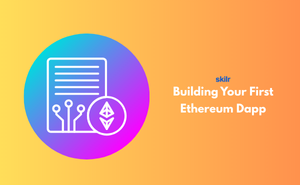👇 CELEBRATE CLOUD SECURITY DAY 👇
00
HOURS
00
MINUTES
00
SECONDS

Creating your first Ethereum DApp involves developing an application that operates on blockchain technology, giving users more control and security. Unlike standard apps that rely on central servers, DApps run on decentralized networks powered by Ethereum smart contracts. These contracts are like digital agreements that execute automatically when conditions are met.
This makes DApps reliable, tamper-proof, and resistant to downtime. They can be used for many purposes such as finance (DeFi), gaming, NFTs, or supply chain tracking. Learning how to build one is an entry point into blockchain development and a step toward contributing to the growing Web3 ecosystem.
This exam is ideal for:
Industry-endorsed certificates to strengthen your career profile.
Start learning immediately with digital materials, no delays.
Practice until you’re fully confident, at no additional charge.
Study anytime, anywhere, on laptop, tablet, or smartphone.
Courses and practice exams developed by qualified professionals.
Support available round the clock whenever you need help.
Easy-to-follow content with practice exams and assessments.
Join a global community of professionals advancing their skills.
DApps are decentralized and run on blockchain, not central servers.
No, but Ethereum is the most popular and widely supported platform.
Yes, building and deploying a simple DApp is included.
No, you can practice on Ethereum test networks for free.
Yes, tools like MetaMask are part of the training.
Yes, NFTs are introduced as a real-world DApp use case.
Yes, DeFi apps are a common Ethereum DApp category.
Developers, entrepreneurs, and tech professionals interested in blockchain and Web3.
Basic programming knowledge is helpful but not advanced-level.
Solidity, the primary language for Ethereum smart contracts.